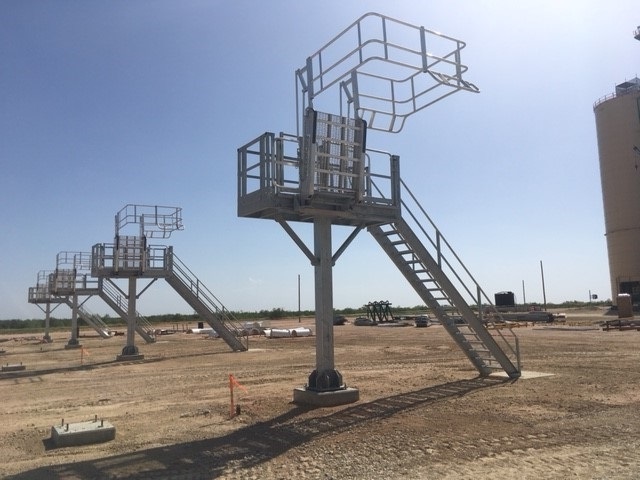Safe, Efficient Dry Bulk Truck, Railcar Loading/Unloading
April 23, 2020

Many industries face challenges when loading and unloading bulk materials. Weighing safety issues with the need for efficient throughput is a universal issue. The dry bulk industry is not alone. The dry bulk industry’s process for loading bulk trucks and railcars requires custom solutions. The materials may be different – cement, grain, frac sand, etc. – but the core challenge is still the same: Protecting workers while achieving fast and efficient throughput.
Most dry bulk operations--especially the cement industry--have independent truck drivers performing the loading operation. The load pays the driver so they don’t want to be waiting. These sites typically have several truck lanes open 24 hours a day, servicing hundreds of trucks each day. The efficiency of the operation needs to be a well-oiled machine.
Many sites believe they have the right set up for their operation because it looks like a typical truck safe access and fall protection solution used within other industries. This usually consists of a stationary platform with stairs, an access gangway/bridge, and a safety cage. Unfortunately, many companies learn through an unfortunate accident or a fine that a “one size fits all” solution does not apply to the dry bulk industry. Below is a list of some of the most common dry bulk truck loading challenges and solutions to overcome them.
Dry Bulk Truck Size and Style
A typical dry bulk loading station may service a wide variety of trucks, each with varying sizes, elevations (heights), and hatch locations. The loading platform must be designed to accommodate these different configurations. The varying heights of bulk trucks pose a serious fall hazard if the safety bridge is not sized properly.
Truck Spotting
Correctly spotting dry bulk trucks at each station is critical for the safety and efficiency of the loading/unloading operation. This task is harder than one might think. Trucks are large and drivers are under pressure to quickly get in and out. Incorrect truck spotting is a common occurrence. When this happens, accidents can happen. In the worst case, the driver might bypass all safety and jump directly onto the top of the truck to access the miss spotted hatch. Safety bridges/gangways mounted to slide tracking systems can solve this problem.
Top Hatch Orientation
While correctly spotting the vehicles will solve some of the issues, many times the top hatch will not open due to the size and location of the safety cage. Many top hatches open perpendicularly to the truck. An improperly designed/sized safety cage will not allow the hatch to open. Frustrated with the situation, often a truck driver will lift the safety cage up and out of the way to open the top hatch. When they lift the safety cage, they are now exposing themselves to a possible fall and potentially fatal incident. Properly sized (or even custom shaped) safety cages with flared bottom rails allow hatch domes to open and rest safely.
More Than One Hatch May Need to be Opened
Again, a properly sized and designed safety cage is critical. Slide tracking gangways easily allow more than one hatch to be accessed without having to reposition the truck.
Speed of Operation
Time is money. Delays negatively impact the overall operation. Drivers need to be able to pull into the loading station, load as fast as possible, and get out. This constant turnaround can take its toll on equipment that is not properly designed for the loading requirements. Versatility is key to operating a safe and efficient bulk loading station.
Independent Truck Drivers/Operators-Training
Faced with brand new drivers every day, the equipment must be easy to use, well maintained, and properly designed to accommodate most truck types. While the solution is engineered with the needed features to address the site challenges, how the equipment is used is critical. Training must be part of the overall solution for each site. The training needs to include new drivers/operators and re-enforcement for existing drivers/operators.
In a well thought out, properly designed dry bulk loading station, maintaining operator safety does not mean that efficiency and throughput take a back seat. Incorporating solutions for each company’s unique loading challenges will allow operators to safely work continuously with no down time. Dry bulk operators should work with a knowledgeable supplier to help guide them through this important process.
Christopher J. Roark is the regional & international sales manager for Green Access & Fall Protection, a division of Benko Products Inc. Green Access & Fall Protection has been a leader in safety equipment for more than 50 years, designing and building the access and fall protection equipment for trucks and railcars and other industrial needs. For more information, call 440-934-2180, email [email protected], or visit www.green-mfg.com.
You May Also Like


